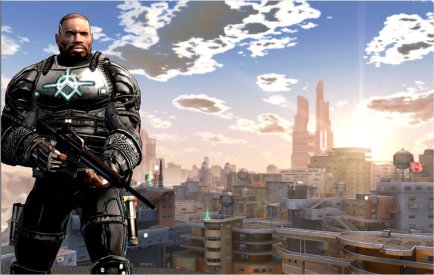Imagine, if you will you’ll, that you’re looking at someone standing in an empty cave the size of a stadium, fighting a creature a hundred times their size. You don’t need words to explain this. It’s your classic David vs Goliath struggle, a story told entirely in images. An image, after all, is worth a thousand words. Now add music to that image. Now movement. Now control. What I’ve just described is a scene out of dungeon-crawler Demon’s Souls. It just so happens that you get to participate in those images.
Less is more
There’s little in in the way of plot, characters, or dialogue to bog things down. As such, the game functions more as an interactive picture book than an interactive movie. It’s been argued that games cannot have the depth of other, more linear forms of storytelling such as books or movies, but I believe that games tell stories that are much more abstract. These stories are based on each player’s experience of playing the game, and a game’s artistry can subtly guide this narrative experience, without overbearing the player with exposition.
Continuing with Demon’s Souls, one area of the game is based within a labyrinthine mine. You start out on the surface, along a lush canyon against the red of a sunset. As you enter the mines, you come upon dimly lit tunnels and wooden walkways. Plunging the mine deeper, you find yourself in ever darker, narrower tunnels, only to suddenly stumble upon large pools of lava with giant slug-like creatures. There’s a staggering feeling of isolation and helplessness as you realize just how deep the rabbit hole is, and this is all done with only the slightest hint of plot. Thus far, the plot has been very simple one about a cursed kingdom and an anonymous hero fighting legions of demons to save it. The story isn’t complex, yet it provides enough context to explain why you’re doing what you’re doing. The real story, however, is yours as you fight the impossible fight against a gorgeously rendered backdrop.

Crackdown’s story is found in its world, not in its cut scenes.
Another game that understands this minimalistic approach to storytelling is Crackdown, even though it was frequently criticized for lacking a story. It did actually have one, but it was told entirely through its setting and gameplay mechanics. True, there is no real character development, and your only mission is to take out twenty-one targets, in whatever way you choose to. Crackdown’s story lies in its portrayal of a fascist society, something discovered by exploring its world and blowing shit up. The agents, of which your protagonist is one, are mindless drones that can be respawned from a number of supply points, a solid indication of how powerful and inhuman the Agency’s totalitarian rule is. The Agency Tower is the game’s tallest building, reinforcing the notion of a totalitarian, fascist society. The final twist reveals that the agency is (gasp) evil, and it’s hardly a surprise, given how the player has spent countless hours as a merciless killing machine. Subsequently, this heavy-handed explanation is the one point where the storytelling missteps, as it doesn’t trust players to figure out things for themselves.
Read the rest of the article here, at thegamereviews.com
